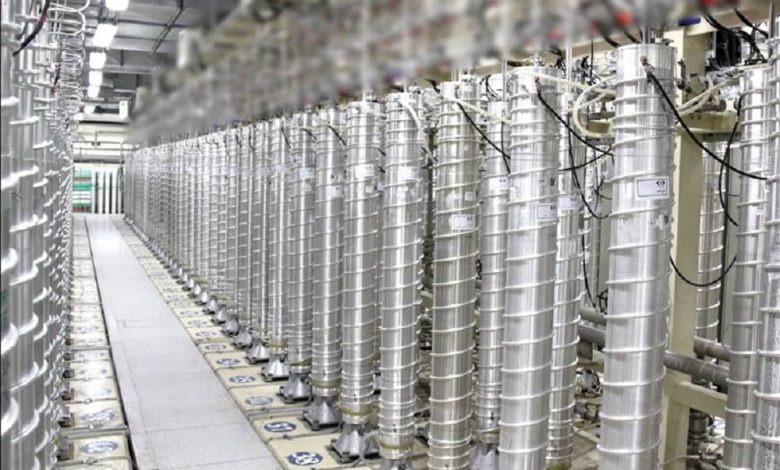Iran’s Latest Nuclear Threat Underscores Need for New Western Strategy

Written by
Alejo Vidal Quadras
By Alejo Vidal-Quadras
This week, Iran notified the International Atomic Energy Agency of its intention to continue the provocative advancement of its nuclear program. The move reinforces Tehran’s commitment to threats and blackmail as its only strategy for restoring the seven-party nuclear agreement that it began systematically violating in 2019. Western signatories to that agreement should now recognize that the Iranian regime has no intention of compromising and they should begin to seriously examine other ways of approaching the issue at hand.
Early this year, the Iranian regime announced that it had begun the production of uranium metal, a substance with little to no practical purpose other than as a key component in the core of a nuclear weapon. The regime’s latest announcement entails plans to begin further enriching that substance up to the 20 percent level, bringing it much closer to the point at which it can be used in the immediate production of a bomb.
Fitting a Square Peg into a Round Hole with Iran Negotiations – April 2021
In reporting on Iran’s announcement, the IAEA seemingly attempted to reassure the international community that the underlying threat would take time to develop. There are intermediary steps the regime will have to take before arriving at the anticipated outcome, but there is a limit to the international community’s ability to monitor the regime’s progress toward that end. Tehran is very much aware of this and is no doubt exploiting the current lack of IAEA access to the country as a means of exerting more pressure on signatories to the Joint Comprehensive Plan of Action.
With its implementation in early 2016, that agreement established an inspections regime whereby the IAEA would have more-or-less free access to declared nuclear sites, surveillance, and data collection equipment, but would have to request access to any sites that came under suspicion after the fact. This allowed Tehran to obstruct new inquiries indefinitely, which is exactly what it did with regard to three sites where remnants of nuclear material were later found, albeit only after Iranian authorities conducted large-scale sanitation and demolition.
After about a year of systematic violations and increases in its nuclear stockpile, the regime announced that it no longer considered itself beholden to any of the restrictions put in place by the JCPOA.
After six rounds of talks conducted, Iran has refused to alter its position. It continues to insist that the US simply remove all sanctions at once before Iran takes any steps to reverse its recent advancements, much less to come back into compliance with the provisions of the JCPOA.
These demands are plainly unworkable. This was confirmed by no less an authority than IAEA Director-General, Rafael Grossi, speaking ahead of the June release of the agency’s latest report on the status of the Iranian nuclear program. Grossi noted that “Iran has accumulated knowledge, has accumulated centrifuges and has accumulated material,” all of which make it necessary that the JCPOA’s signatories adopt some sort of parallel or supplemental agreement, at a minimum, to address advancements that were not present when the original deal was negotiated.
Iran nuclear deal crisis: Who is to blame?
Grossi’s input was arguably made all the more significant by the IAEA report’s subsequent revelation that Iran’s three-month agreement with the agency was far less valuable than most policymakers realized. It was widely understood that inspectors had been barred from accessing declared nuclear sites directly, but what was initially not clear was that Iran also resolved to withhold the contents of video surveillance systems and other data collection equipment, leaving the IAEA to prepare its latest report, for the first time, using estimates only.
The international community cannot afford to hide from that revelation and it certainly cannot afford to give in to Iran’s blatant efforts to intimidate the JCPOA signatories into giving the regime what it wants in exchange for nothing but unverifiable promises of future compliance. Of course, this immediately raises the question of what alternative course of action the US, the UK, and the European Union could take to make sure Iran does not continue its progress toward a nuclear weapon unabated in absence of a functional agreement.
The short answer is that they can return to and expand upon the multilateral sanctions regime that was working before the JCPOA was even conceived of. The longer answer will no doubt be presented to the international community this weekend in an annual event bringing together Iranian expatriates and political supporters. The “Free Iran World Summit” can be expected to focus primarily upon developments inside Iran following years of popular uprisings and a presidential “election” that brought to power a deeply despised human rights abuser. But the event will no doubt touch upon the nuclear issue as well and will reiterate the Iranian resistance’s position that the issue will only be solved once and for all when the Iranian people throw off their repressive government and establish a new one that is committed to free elections, secularism and a non-nuclear future of peaceful cooperation throughout the world.

Dr. Alejo Vidal-Quadras
Alejo Vidal-Quadras, a professor of atomic and nuclear physics, was vice-president of the European Parliament from 1999 to 2014. He is President of the International Committee In Search of Justice (ISJ)

